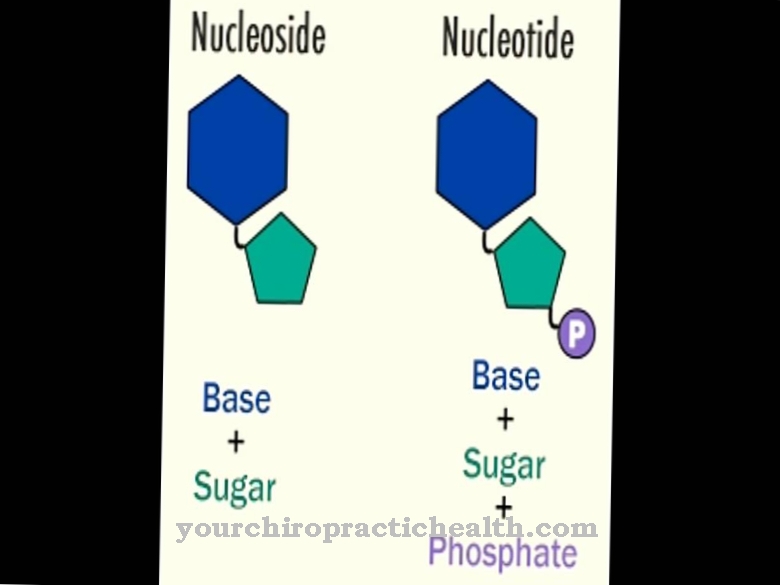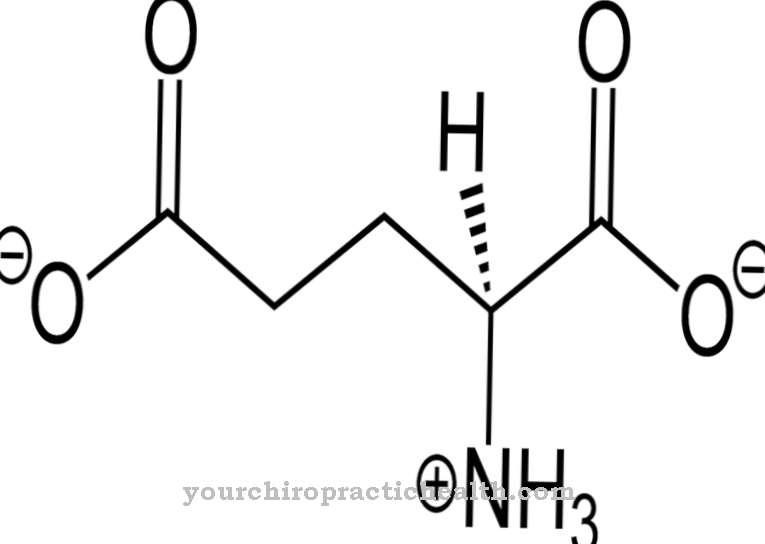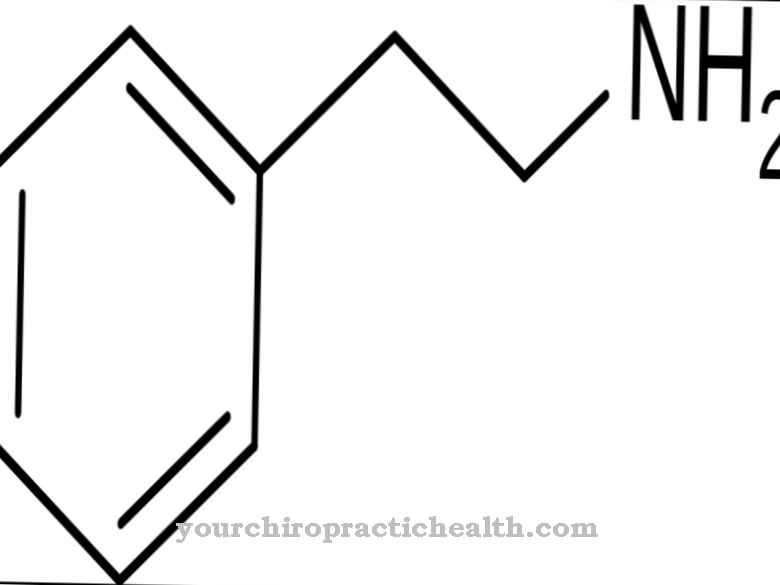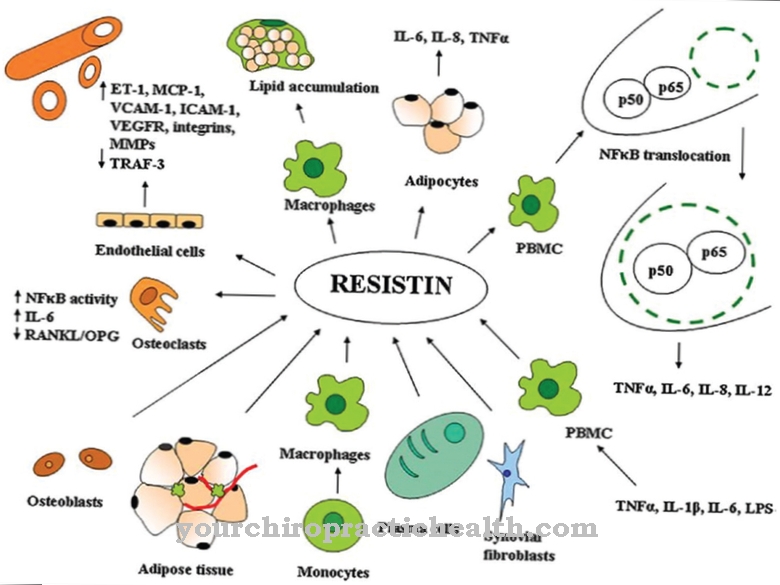Phospholipids are significantly involved in the structure of cell membranes. They are complex lipids that contain a phosphoric acid ester bond. They are also amphiphilic because they have a hydrophilic and a lipophilic area.
What are phospholipids?
Phospholipids are glycerol or sphingosine esters with two fatty acid molecules and one phosphoric acid residue, which in turn can be esterified with various alcohols. They are the basic building blocks of cell membranes and cell organelles.
There they form a double lipid layer that separates the intracellular space from the extracellular space. Both rooms have watery environments, the molecules of which do not come into contact with one another. The phospholipid molecules each contain a hydrophilic and a lipophilic area. The hydrophilic area is represented by the glycerine and the phosphate group and also frequently by the alcohol esterified on the phosphate group. The lipophilic area is located on the fatty acid residues. The lipophilic groups aggregate, while the hydrophilic groups are reluctant to each other.
The lipid bilayer contains two hydrophilic layers that delimit the cell from the outside and from the inside. The lipophilic area lies within the double layer. The phospholipids are divided into phosphoglycerides and sphingomyelins. Furthermore, the phosphoric acid residues can be esterified with choline, ethanolamine or serine, among others. In the case of phosphoglycerides, this results in phosphatidylcholines (lecithin), phosphatidylethanolamines or phosphatidylserines.
Function, effect & tasks
The phospholipids represent the main component of the biomembranes. In this function they separate the cell interior from the surrounding area. The simultaneous hydrophilicity and lipophilicity enable the phospholipids to act as a boundary layer between water and oil.
So fat-like substances accumulate at the lipophilic end of the molecule. Polar substances and aqueous solutions bind in the hydrophilic area. Both water, water-soluble compounds and water-insoluble but fat-soluble compounds are brought into solution at the same time. In water, phospholipids always form double layers, whose hydrophilic molecular parts point towards the water and whose lipophilic molecular parts point away from the water. At the same time, the membranes form spaces within which biochemical reactions can take place undisturbed by external influences. The non-polar regions of the phospholipids contribute to their fluidity.
The non-polar fatty acid residues accumulate here, but due to the non-polarity, the molecular interactions are weak here. In this way, the hydrocarbon tails can shift slightly against each other. The hydrophilic heads are indeed averse to each other. However, there are stronger binding forces for polar molecules. Due to the lipophilic character of the cell membrane, two aqueous environments are separated from each other so that biochemical reactions can take place undisturbed in both areas. With the help of transport proteins, molecules or ions can be selectively transported via the channels built into the double membrane layer.
Receptors present within the double membrane transmit signals inside the cell. Vesicles can split off the membrane, which consists of phospholipids, and can absorb substances foreign to the cell or release enzymes or hormones to the extracellular area. In addition to its function as a membrane component, lecithin also serves as a starting material for the formation of the neurotransmitters acetylcholine and noradrenaline. It also plays an important role in fat digestion.
Education, occurrence, properties & optimal values
Phosphatidylcholine (lecithin), phosphatidylethanolamine, phosphatidylserine, phosphatidylinositol and sphingolipids are present as phospholipids in the membranes. In addition, cholesterol and its derivatives ensure the fluidity of the membrane. The lipids facing the cell surface can be glycosylated.
The synthesis of phospholipids takes place in the smooth endoplasmic reticulum. From there, the molecules are transported to their destination in the form of vesicles and built into the membrane. In the human body, a particularly large number of phospholipids are found in the brain, bone marrow, liver or heart, in addition to their normal occurrence in every cell membrane. Foods particularly rich in phospholipids are egg yolks, seeds, roots, tubers, mushrooms, yeast and vegetable oils.
Diseases & Disorders
The so-called antiphospholipid syndrome is known in connection with phospholipids. This disease occurs mainly in women and is characterized by an increased incidence of arterial and venous thromboses.
This often results in heart attacks, strokes, pulmonary embolisms or thromboses. Paradoxical bleeding occurs in the skin, leading to increased consumption of platelets. Miscarriages are common. The cause of this condition is an autoimmune disorder. The immune system is directed against certain phospholipids such as cardiolipin or prothrombin. However, these are always antibodies against the phospholipid-associated proteins. The syndrome occurs both alone and in the context of various autoimmune diseases that belong to the rheumatic group of forms.
The most common underlying disease is systemic lupus erythematosus (SLE). An antiphospholipid syndrome can also develop in the context of malignant tumors or HIV. Secondary antiphospholipid syndrome can also occur in rheumatoid arthritis, lupus erythematosus or Sjögren's syndrome. The protein beta-2-glycoprotein I plays an important role in the pathogenesis of the disease. It is present as a monomer in the blood and binds, among other things, to the cell membrane of monocytes and thrombocytes, whereupon the blood platelets are activated.
When binding to the cell membrane, the molecule changes its conformation, which makes it vulnerable to attack by specific antibodies. A dimer is formed that can bind to various receptors located in the membrane. As a result, thrombus formation is activated. There is also a special form of the disease that particularly affects young men between the ages of two and four. This is the rare Hughes-Stovin syndrome with similar symptoms.



























